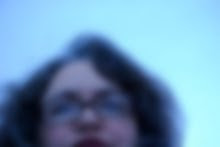13.6.06
Museum poetics...
A couple of basic tenets on curating/developing museum exhibits.
Digression on specific instances
- Exhibitions reveal partial truths. They act as a form of distillation — asserting something (a ‘positive’ truth) while leaving a good deal of space for interpretation (pace John Dewey).
- They represent a form of sensual communcation — primarily visual but often auditory, tactile, as well. The texts must therefore function like haiku — meanings are implied, not orated at length.
- As an ‘institutional’ practice, exhibits reflect (or institutionalize) relations of power and difference. While exhibits can encourage alternative readings and subvert commonplaces, one must consider (per Raymond Williams) how the “anti-hegemony” functions within (and reflects) the dominant hegemony.
- The curator must always question the point of view being promulgated (his or her own included), as well as the visitor point of view.
- Exhibit developers/designers employ all manner of trick (smoke/mirrors/buttons) etc. to lure visitors into becoming engaged more deeply with the material. The danger of course is that the tricks sometimes overwhelm the subject. One must remember that the design components must always speak to the essential exhibit concept. When the components are of necessity intrusive, how does this tie in with the exhibit theme?
Digression on specific instances
- The 2000 opening of the American Museum of Natural History“s Rose Center for Earth & Space serves as an apt example of poor information design — while a breathtaking vision in and of itself, at that time the paths through were labrynthine and disorienting, and the information purveyed oftentimes unintelligible. The one exception was the relation of the planets (an amazing expression of scale).
- The Museum of the American Indian by contrast intentionally obfuscates, as community curators sometimes chose to assert group identity while not revealing too much about the significance of certain beliefs or practices, or history. One wonders too whether much of the gadgetry employed by the Australian design team supported the exhibit themes or ideas.
- Like AMNH, NMIA’s encasing structure is visually magnificent and well considered as a piece of social architecture. In this instance the structure, beyond its social inclusiveness, also signifies an important change in relations of power. While too many of this country‘s original people remain economically and socially marginalized, NMIA's presence on the mall (as do NAGPRA and the Abramoff scandal) indicates the degree to which Native Americans are evolving into a strong political presence on Capitoll Hill. On the other hand, Bush’s recent decision to cut spending on diabetes research (a devastating epidemic afflicting many Americans, but particularly Native Americans) doesn't seem to support this idea or at least indicates a certain degree of giving with one hand and taking with the other. In this regard, perhaps symbolic gestures outrank efforts to benefit the majority.
